- Please tell us the history of this young company and why you decided to launch it. Why did you decide to focus exclusively on large format digital outdoor screens?
Most of my career has been in and around media sales and management and my eight years running the New Zealand operation for APN Outdoor was exciting, challenging and fulfilling for the most part. But after eight years and with changes afoot, I felt it was a good time for me to leave. I needed a break to refresh, and time to find the next opportunity. Fortunately, my good friend and former work colleague Kent Harrison reached out and quickly talked me into joining him and a couple of cohorts to form a new media business. We were both Outdoor Media guys, and it was the channel showing the most promise for sustained growth. So it was agreed that if we were going to start a new media business, it had to be in the Out-of-Home sector and most importantly, Digital Out-of-Home.
The New Zealand market is small on a global scale and had a total advertising revenue of just under $NZ2.6 billion in 2015, the year before we launched LUMO. At that time, OOH was just 3.7% ($NZ95 million) of that total, but we could see that it was only a matter of time before outdoor operators would start to catch up with the rest of the world and begin investing significantly in DOOH infrastructure.
We recognised at that time that roadside billboards delivered the largest proportion of revenue for OOH operators compared to all other formats, but suffered from clutter, underinvestment and, in some cases, neglect. We decided that the best opportunity for success for our new venture was to be very focused, premium, tech-led and Auckland-centric (NZ’s largest and most important advertising market). And as such, Lumo Digital Outdoor Ltd. was formed to become a 100% pure-play premium digital billboard business with added smart technologies that no other operator was utilising.
- Are you and Kent Harrison, executive vice-president, the sole owners? Please tell us about your backgrounds.
We both have equal shareholding along with three others, all of whom are successful business people in their own rights, mainly focused around commercial property development and investments. They are very engaged and love the business, but leave the daily operational responsibilities to us outdoor guys.
I have been involved in media for most of my working life. I started as a young sales rep selling motoring advertising for a local newspaper in South Auckland. I spent several years in newspapers, moving through the ranks, learning from the grass-roots. I dabbled in radio and magazines, then started a business in 1994 with a colleague, distributing unaddressed mail (mailers, flyers, newspapers, etc.) to household letterboxes across the country. From 2008, I spent eight years running APN Outdoor NZ. During my time there, I worked with some amazing people and introduced digital outdoor media to New Zealand. But it’s what’s next for this space that excites me the most!
After a few years traveling the world and time with the NZ Army as an officer cadet, Kent fell into the outdoor advertising sector 17 years ago after a few years selling for the Radio Bureau. After so much time invested in the industry, Kent’s profile is high and wide in the NZ media landscape. The evolving nature of the medium, the characters associated with the category, and the clients who have evolved into friends over the years have kept Kent passionate about the outdoor space.
- What did you learn at APN Outdoor and your earlier experience that you are applying at LUMO?
Outdoor Media is first and foremost a real estate play. I learnt from my time at APN Outdoor the importance of choosing good property locations to acquire or retain, and just how critical it is to work in true partnerships based upon sound business principles and trust. Once you have the sites, you need to apply a well-considered development strategy that is consistent, focused, and that offers a strong presence in the country’s largest market. For NZ, that is Auckland.
Then, ultimately, we need to sell our media proposition to agencies and advertisers, so relationships play a vital role in converting potential into revenue, the life-blood of all businesses. Finally, the most critical reminder is the value of the people in your team: not only the skill-sets, experience and knowledge they bring to their respective roles, but, probably more importantly, their energy, creativity, attitude and trustworthiness.
- You started with two screens in late 2016. How many do you have now and where are they?
How many do you hope to have by the end of 2019? And the end of 2020?
Our start-up period was all about introducing our brand proposition and building our first few screens The second stage was all about quickly growing inventory scale which helped build our presence and visibility. Currently, we have 13 screens in Auckland’s CBD, one in Hamilton, one in Tauranga and two in Christchurch.
We will be launching our first Wellington screen in late August, 2019, which, when combined with the others, completes LUMO’s national main metropolitan network. We have a further eight screens confirmed to build in Auckland’s CBD-fringe this year, another in Tauranga and another in Christchurch.
The result will be 21 screens in Auckland, one in Hamilton, two in Tauranga, one in Wellington and three in Christchurch for a total of 28 – which will not be bad after just 38 months in operation by the time they’re built. LUMO will be a dominant Outdoor brand with the most premium pure-play digital network in the country.
Moving into and beyond 2020, our focus will shift to digital creativity and dynamic content production. We will slow the roll-out of more Large Format screens, with the potential for developing other smaller format digital products. We have already formed the foundation for making a real-time audience measurement tool through our partnership with AdMobilize and its real-time traffic analytics platform. We will evolve that into a measurement portal specifically catering to the dynamic and unique attributes of DOOH.
-
How big a staff do you have at this time? Do you expect to be hiring more this year? If so, in what area?
We have a team of 11 including Kent and myself and a partnership with Sydney-based WeThinkMedia, which represents and sells our media to Australian-based agencies needing a NZ DOOH solution. Looking ahead, it is difficult to be too specific, as we simply don’t know what roles will form as we continue to grow. But we’re pretty sure that we will need more sales people and some expertise around software, artwork design and technology.
-
Your web site claims that, with LUMO screens, you offer leading-edge technologies, premium inner-city locations, and greater accountability through real-time analytics ‘unlike any other outdoor operator in the world’. What makes you able to make that latter claim?
We are young, ambitious and agile with a deep-seated determination to bring the best of DOOH from other markets to NZ and where possible, invent tools and solutions ourselves that will help our advertising clients gain more insight, accountability, transparency and results.
We are a positive disrupter, a DOOH business established to fulfil a ‘premium’ opportunity and also challenge the ways in which our OOH industry operates, innovates and improves our value proposition, lift service levels, provide full transparency and be more accountable. Being new and 100% digital, we could design a business tailored to meet those needs through leveraging our experience and either finding or creating relevant tech-led ideas and solutions to solve the inadequacies that exist in our market.
NZ doesn’t have an audience measurement tool for OOH so the first area we wanted to focus on was the development of one that captured audience data in real-time and, specifically, at each billboard site. Fortunately, we were introduced very early in our planning to the guys at AdMobilize, who had created clever software that recognized vehicular movement and captured speed and volume data in real-time (Traffic Analytics). We licensed its software for each of our screens.
When our first digital screen went live in Dec., 2016, we were the first in the world to use this technology to live-count vehicular traffic for the purposes of accounting for the scale of the audience that travelled specifically towards and past our screens. We now have a national network of seventeen screens (with more to come this year), each accounting for the traffic volumes, trends, patterns and speeds in real-time which we believe is unlike any other outdoor operator in the world.
This is the foundation of an eventual real-time audience measurement capability. We are now searching for and developing other datasets from live sources that will integrate with our Traffic Analytics to provide a truly deep, rich and insightful experience for our clients.
Our other OOH firsts, if not in the whole world, certainly much of it, include:
Free Fibre WiFi hotspots; Live-streaming HD Webcam (looking back at each billboard) – with log-in access via our website coming in August;
third party independent display reporting with Seedooh;
Crowd Analytics for quantifying pedestrian audiences – currently in test mode.
We have technology partners based in Australia, the U.S., China and the U.K. and we travel regularly, which helps us keep in touch with emerging tech and innovations relevant to our sector.
-
Last August, you chose Ayuda Media Systems to handle business integrations, digital content management, and data collection. What made you choose Ayuda? And how is it going so far?
We first met some from the Ayuda team at #DSE2018 in Las Vegas. We wanted a cloud-based platform that integrated our sales, inventory, content management and finance systems into one. Ayuda presented strong credentials, are OOH specialists and have a service and support team close to us in Sydney.
The integration was completed later in 2018 and, after a settling down period, we are now learning quickly how to leverage the efficiencies and opportunities this system has to offer. We also view the recent acquisition of Ayuda by BroadSign as a positive step, as both companies are innovative, technology-savvy and client-focused.
-
You were a long-time executive in the Outdoor Marketing Association of New Zealand. Are you still a member? What is that association doing – or should be doing – to promote and educate about the Digital Out-of-Home industry?
I was part of the rejuvenation of the then-defunct Outdoor Marketing Association back in 2009, and I was its inaugural Chairman. The reformed Outdoor Media Association of NZ started with six members and a couple of interested parties who sat outside the executive. It had relatively simple objectives in the early days, as it had been several years since players in the outdoor industry in NZ had actually sat around a table to discuss industry issues and opportunities.
We had a few small wins in the first two or three years, but ultimately, the organization suffered from its lack of membership scale, trust and funding. For the last few years, OMANZ has failed to present a united voice for the industry, provides little or no value to its members and absolutely no value to the industry. In my opinion, it is dysfunctional in its current form, and in need of a complete overhaul if it is ever to offer meaningful value to OOH stakeholders. And no, LUMO is not a member.
- Your country, unfortunately, has been prone to several major earthquakes. In building your new screens, has this been taken into consideration? If so, how, or is that even possible?
Yes, we do live in a country that sits along part of the Pacific’s ‘ring of fire’ which has always been prone to earthquakes and volcanic activity, similar in many ways to Japan. The more recent earthquakes in Christchurch and Kaikoura (which affected Wellington) caused a lot of damage and misery in those areas, but they have had no direct impact on the building of our screens. We have always had a rigorous design process to work with when designing our screen structures and foundations.
-
You are a partner with the U.S. firm Daktronics. Is this a financial partner in any way, or does it just build and supply all your boards? Are your boards more impervious to weather because their pixels are embedded as they are in Daktronics boards in North America?
We have a very strong and enjoyable partnership with Daktronics, based upon a manufacture and supply agreement. We chose Daktronics for its experience, capability and unparalleled LED design and build quality. To fulfil a premium quality promise to our advertising clients, we had to be sure we were investing in the best technology.
All LUMO screens are custom-designed and manufactured at Daktronics’ Brookings plant in South Dakota, USA. New Zealand has a very harsh outdoor environment. We’re surrounded by sea, experience a whole range of humidity and temperature variations through each year, and the ultraviolet sunlight in New Zealand is amongst the harshest in the world. Plus, it rains quite a lot in Auckland and is very windy in Wellington, so cheaper inferior-quality LED always gets caught out in NZ.
-
New Zealand has two parts, the North Island and the South Island. What does your data tell you about the differences between each in terms of population, lifestyles and buying habits?
Our technology innovations can be summarized as follows:
Dynamic Content management; Premium Outdoor LED technology (Daktronics USA) – superior colour calibration, visual contrast, Module plastics, Louvres and reliability;
Live-Streaming HD webcams;
Real-Time Traffic Analytics (AdMobilize) – vehicular volumes, speeds, trends/patterns. It’s the foundation for an eventual real-time audience measurement tool;
Real-Time Crowd Analytics (AdMobilize) – trialling pedestrian counting software on LUMO-Anzac;
Third-Party Campaign Display Reporting (Seedooh);
Free Fibre WiFi – allows deeper engagement for brands who wish to link their on-screen campaign strategy with a localised WiFi solution.
None of these innovations collects data that can offer insights into population, lifestyles or buying habits. However, the real-time analytics platforms we’re operating is the foundation for an eventual audience measurement tool which will include demographic and buying behaviour insights. This is something we’re developing for launch in 2020.
- Your boards offer Wi-Fi within a certain radius. Do many advertisers use it for interactivity with drivers or pedestrians? Can you tell us how it was used by an advertiser in a recent campaign?
LUMO’s network is the only one in NZ which uses uncapped fibre optic broadband. This gives us fast upload and download speeds, connection reliability and unburdened live streaming capability. And this gives us the capability to establish a free WiFi network using our screens as hotspots. If people are within 50-to-100m of each site, they are able to log onto our WiFi service and enjoy a great experience surfing the Internet.
The only interactivity realistically available is with pedestrian traffic or people working or living in the immediate area.
Last year, BNZ, a bank brand, linked its DOOH campaign with our WiFi Network. We changed the name of the Free WiFi from ‘LUMO Free WiFi’ to ‘BNZ Free WiFi’, changed the artwork on the splash page to mimic what was being used in BNZ’s advertising campaign, and we linked the splash page to a landing page on the bank’s website that offered more information about BNZ’s offer. Over the four-week campaign, BNZ enjoyed over 10,000 unique click-throughs and a significant uplift in web-based enquiries.
- What do you consider New Zealand’s most iconic billboard site by LUMO? Tell us about it and how it is being used by advertisers. Can you give us some examples of recent campaigns?
LUMO-ANZAC located in downtown Auckland is a 90 sq. meter curved screen which is building in its iconic status but considered by most as simply the best digital billboard in the country. The curved design, size, street-level position and location adjacent to a controlled intersection provides a massive high quality pallet to display digital creative. It not only enjoys high volume vehicular traffic, but high dwell time and big numbers of pedestrians.
NZ Breakers – Although not a dynamic campaign, we used the ease of uploading to our digital assets for an immediate response to LeBron James becoming a restricted free agent in the NBA. We pitched the idea to the Skycity Breakers, the NZ Basketball team, who used the players’ social accounts to spread the photo of the screen. This had a huge social interaction and was the opening special on ESPN’s The JUMP, which is broadcast to millions.
Radio NZ – To relaunch Radio NZ’s brand and use DOOH advertising for the first time, we gave journalists access to their Ad Slot to write in and upload their own headlines. These headlines coincided with the Talk Show host’s topics and general trending articles on the company’s website. The talkability and brand awareness way exceeded the client’s expectations.
The Green Party – During the 2016 election year, The Green Party used a dynamic feed to update topical headlines and initiatives the party could broadcast to the general public via LUMO-Anzac. This included giving access to celebrity ambassadors and party politicians. This campaign idea helped lift the Green Party’s public profile which helped it form a support role to the new government.
McDonald’s – Using a McDonald’s API, we displayed live voting results of their ‘Is it a Big Mac campaign’. The vote percentages would update every 60 seconds inside their display ad and would fluctuate dramatically during the first few days of the campaign. They also used all of our Free Wi-Fi network to direct voting to their website.
-
LUMO’s advertisers have a 16-second campaign rotation on your boards. Is that standard for all your boards? That’s a little longer that the norm for many boards in North America. What are the reasons for that?
Most of our screens are located near high dwell areas – controlled intersections. This gave us the chance to extend the display time from the permitted eight seconds to twice that, allowing more time for the viewer to enjoy the creative and absorb the message. It is also more enjoyable if the ads are not changing so quickly and therefore more premium. Our SOV (share of voice) is limited to a guaranteed maximum of six advertising slots per loop. This varies considerably from our Australian counterparts with SOV of 10 or more.
- Are you using programmatic buying or do you intend to do so? What are your thoughts on programmatic?
This is an interesting area for OOH. I’m not yet convinced that programmatic trading is the way of the future for premium DOOH operators like LUMO, which have relatively limited inventory volume. However, programmatic might offer opportunities for international agencies with overseas brands wanting to easily access a digital OOH solution in remote markets like NZ.
We are currently in talks with programmatic vendors to learn more about the technology, but I think we might have to wait a little longer before the market actually understands the opportunity, let alone the operators.
-
You offer huge flexibility with low-cost upload fees that allow unlimited content changes at no extra cost. Can you give us an example of how an advertiser used the ability to make many changes in a recent campaign?
Keeping the cost of content uploads low is a deliberate attempt to help encourage advertisers to embrace one of the most obvious advantages of digital media: to change content as often as required to lift contextual relevance and ultimately make the advertising more effective. We equipped all of our screens with super-fast fibre optic infrastructure, unique in our market. This gave us unlimited broadband and the unrivalled capability to leverage the convenience and immediacy of the Internet without any additional cost burden to our clients.
Many of our advertisers have supplied several pieces of content with instructions to play to a schedule. We have clients who have their own log-in access to their campaign slot for self-management. We have clients who have used some of our dynamic content triggers allowing changes to occur automatically in real-time without our involvement (once set-up). All of these campaigns used our low-cost fixed upload fee structure. It is all about making it easy for the advertiser.
-
While your focus is on large format digital screens, would you be interested in expanding your product portfolio? Why or why not? And if yes, in what direction?
We have scheduled the roll-out of several new LF Screens through the back-end of this year so are very focused on delivering these on time. However, as we look ahead to 2020 and beyond, we are thinking about a new format, most likely pedestrian-focused and smaller in size compared to our roadside assets. The priority remains very much around high-quality and innovative technology that offers benefits no other operator in NZ offers advertisers.
We are also looking at creating a division within LUMO that focuses on content production and dynamic management solutions specific to large format DOOH – primarily for LUMO assets but not exclusively so.
-
You have a new partnership with the Australian company Seedooh. What does this involve?
Seedooh is made up of smart people with smart ideas and a patient attitude. They have taken the last few years to develop a platform that will give advertisers and their agencies full and independent transparency to what is actually displayed on OOH assets, digital and non-digital.
Early on in our development, we recognized that flexibility and dynamic content changes would increase display-time complexity. As a consequence, there would be an increasing need for us to evolve and continue to provide our clients the confidence that what we sell would be delivered, regardless of location, time, audience or dynamic trigger for a specific message or campaign.
When Seedooh presented their technology and proposal last year, it was a no-brainer. We eagerly entered a partnership agreement with them just prior to Christmas, 2018, and after integrating Seedooh into the back-end of our Ayuda platform, we went live in June with the availability of Seedooh’s verified Campaign Display Reports, a first in New Zealand.
- You started a new company in the digital world from scratch. Based on your experience, what are some of the things that you’d advise others in a similar situation to do and to avoid?
Focus and strategic clarity is really important. Do your homework, create a meaningful USP (unique selling proposition), partner with people who can fill your skill, knowledge and experience gaps and have the courage or conviction to take the leap. You will need enough capital to get you through the first couple of years so double the costs in your business plan and halve the income. That will set your financial expectations to a more realistic level and help you better navigate through the unforeseen challenges ahead.
Then, believe in your plan and try and avoid distractions – focus, focus, focus. You will need a little luck and it is really important to enjoy the journey.
- New Zealand is a relatively small country. What is your company’s potential for growth, both within and externally?
What a market like New Zealand lacks in scale, it makes up for in innovation, creativity and attitude. We are just two and a half years into the life of LUMO and we have much more still to build over the next year or two.
But as we start to look beyond the immediate future, we can certainly see opportunities with different digital formats, production and implementation of tech-led dynamic solutions and the potential expansion in overseas markets. The world continues to shrink from a business perspective, and we definitely see LUMO playing an important and useful role on the world stage of DOOH.
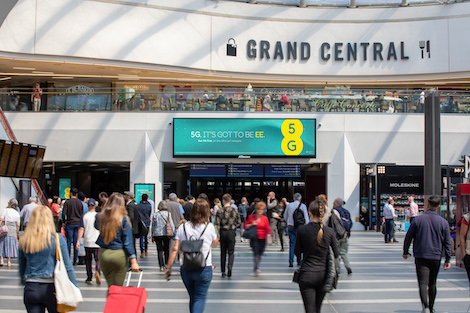
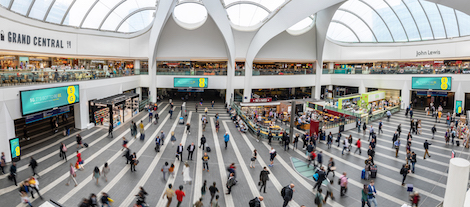

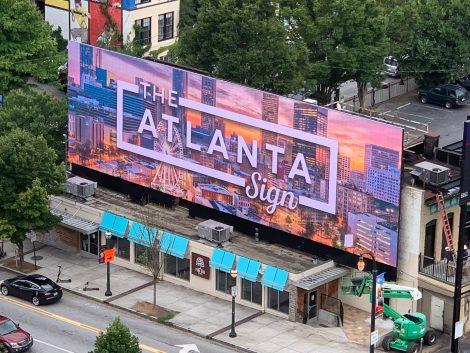
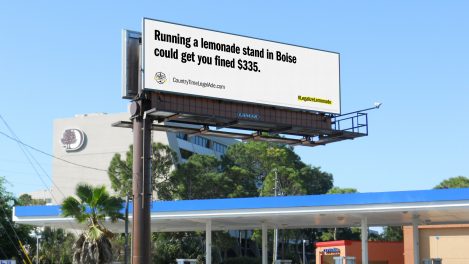
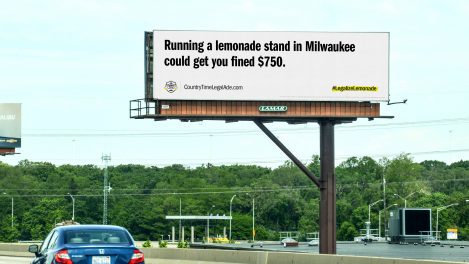
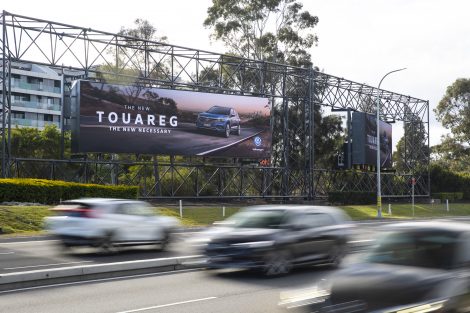


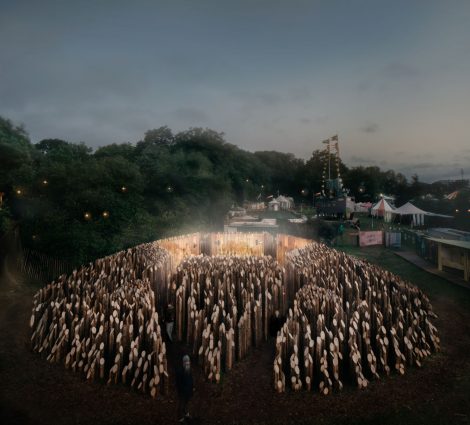
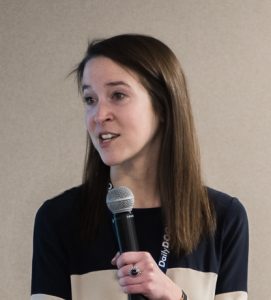
Follow DailyDOOH